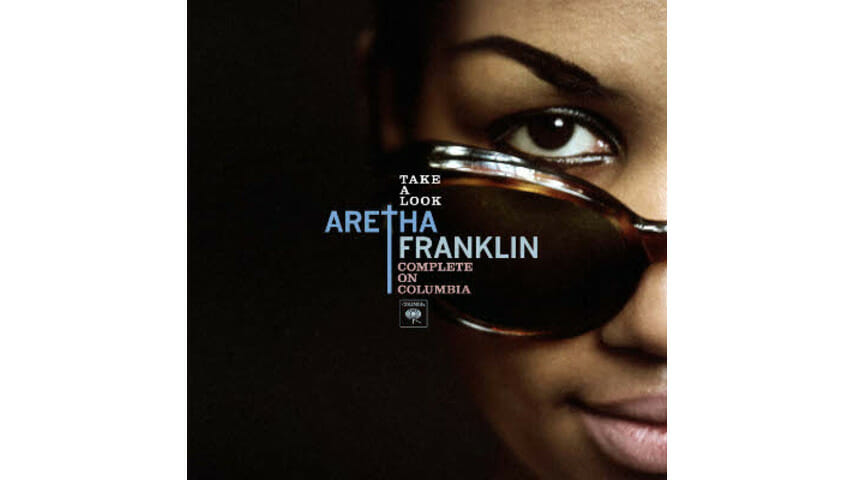Aretha Franklin: Take A Look: Aretha Franklin Complete on Columbia

Aretha Franklin was only 19 years old when she signed with Columbia Records in 1960, but she had already established herself on the gospel circuit as a soloist at her father’s church in Detroit. With his encouragement, she traded the sanctuary for the nightclub and put her heavenly voice toward songs about worldly instead of spiritual love. In five years she made seven records for the label, plus numerous singles and unreleased sessions with various bands and producers, resulting in a string of modest hits like “One Step Ahead” and “Won’t Be Long.”
And yet, this period remains a relatively dark corner in her immense catalog. Most greatest hits and career retrospectives focus on her later triumphs for Atlantic Records: immense, timely smashes like “Respect,” “Natural Woman,” and “Spirit in the Dark,” which reinvented soul music as a gritty realm where a black woman could disclose her deepest concerns about her man, her race, and her world. That period, during which she ascended to the soul throne and reigned for decades, so thoroughly overshadows her early material that her Columbia albums actually fell out of print for years.
In that regard,Take a Look: Aretha Franklin Complete on Columbia
is a sorely needed corrective, an affectionately curated set featuring 11 discs of music that might as well be newly unearthed: expanded editions of her seven Columbia albums, plus two discs of sessions that were either unreleased or released as singles. One album, A Bit of Soul (1965), was never released, which seems a major oversight if not a cold felony, and another disc, The Queen in Waiting, collects highlights from her final sessions with Bob Johnston (Bob Dylan, Simon & Garfunkel) along with recordings that Columbia has since “sweetened”—i.e., lightly and respectfully remastered. Capping off the set is a DVD featuring five live performances from “The Steve Allen Show,” where she was a regular guest. It’s a fitting punctuation to this meaty set, proof that Aretha, even at such a young age, was an impossibly self-possessed vocalist who seemed to embody and enact the last 60 years of African-American musical expression.
It’s important to note her considerable presence on those television clips and in these performances, as too many fans and historians not only dismiss these sessions but also dismiss the young Aretha as a passive agent in her own music. On the contrary, she is no label puppet gamely obeying the barked orders of executives and handlers at Columbia, although she did submit to working with the suggested bandleaders and even took finishing classes in New York. As the bonus tracks on her debut album, Aretha with the Ray Bryant Combo (1961), make clear, she was an active collaborator with her backing musicians, closely engaged with fine-tuning the arrangements. Although inexperienced in secular music, she knew exactly what she wanted and how she wanted to sound in any particular setting.
-

-

-

-

-

-

-

-

-

-

-

-

-

-

-

-

-

-

-

-

-

-

-

-

-

-

-

-

-

-

-

-

-

-

-

-

-

-

-

-








































